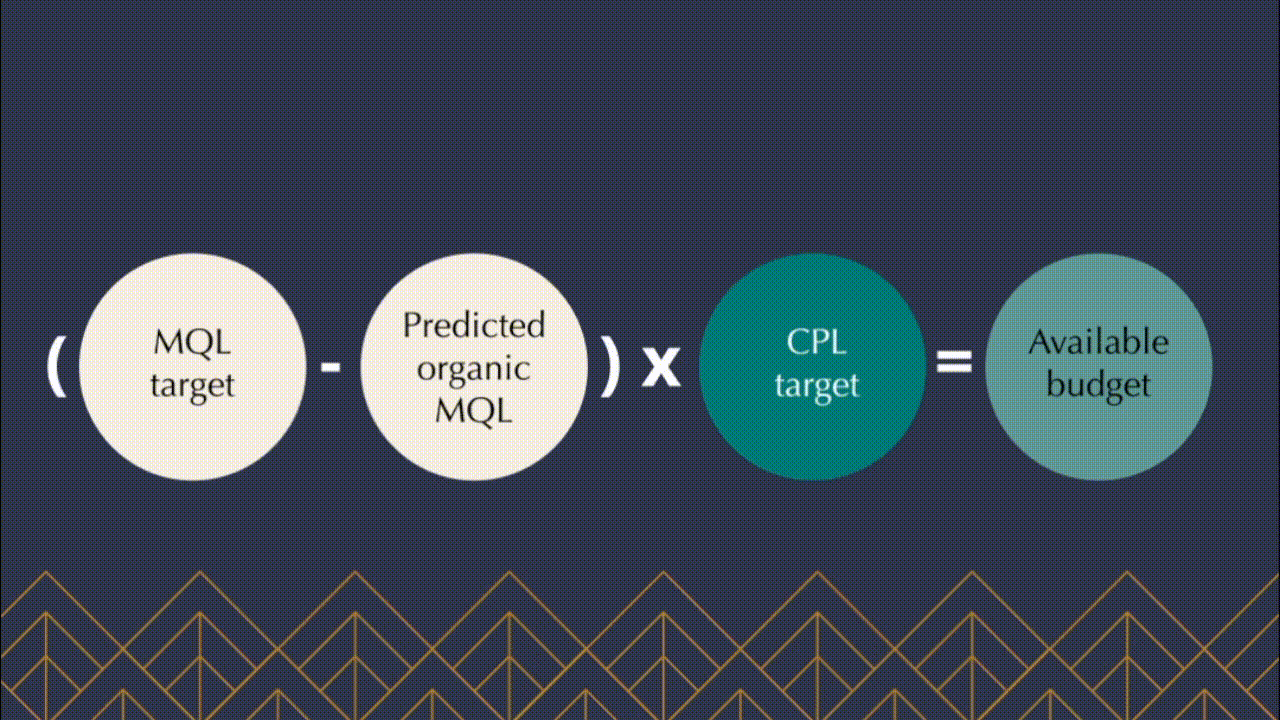
New ways to maximise your marketing budget
Marketers are now looking towards the latest AI and other exciting emerging technologies to maximise the impact of their marketing efforts to optimise their budgets.
But what’s the most effective way to do this?
One thing’s for sure, it’s best to stay clear of vanity metrics, which are often misleading, and don’t give you any solid ways to improve.
We’re going to dive into the best formulas to get the most out of your budget.
The 5 main targets budgets cover
When considering your marketing budget, there are five main areas we are all striving towards. Everything else is a stepping stone to reaching these outcomes:
- Follower Growth.
- Email Sign Ups.
- B2B Leads.
- Online Conversions.
- Footfall.
Whether you are focusing on increasing follower growth or generating leads, trying to achieve multiple goals with the same content won’t produce outstanding results. Each goal requires a different approach and budget allocation to be successful.
How to work out your CPL
Do you know your CPL? Knowing your cost per lead is integral to maximising your marketing budget, and calculating your CPL is relatively simple:
Total marketing spend ÷ number of new leads generated
This straightforward formula will give you the cost per lead (CPL) for your campaign. Just make sure to tally up your leads and marketing costs for the same period to get an accurate result.
6 ways to bring down your CPL
Once you know your CPL, it’s time to work on bringing it down to get the most out of your budget.
- Refining your keyword strategy to target high-intent keywords with low competition.
- Improving ad relevance by aligning ad copy with search intent.
- Optimising landing pages for conversion, leveraging ad extensions like sitelinks and callouts to provide additional information and increase click-through rates.
- Using remarketing to target users who have already shown interest in your products or services.
- Setting bid adjustments based on device, location, and time of day to maximize ROI.
- Continuously monitoring and optimising performance to identify and capitalise on opportunities for improvement.
Managing Attribution
The most effective way to manage your attribution is to combine with it data-backed analytics. This way, you can identify which channels and touchpoints are driving the most conversions, allowing you to allocate your marketing budget more effectively.
Additionally, data-backed analytics can help you understand the customer journey better, enabling you to tailor your messaging and targeting strategies to better meet the needs and preferences of your target audience. Furthermore, by incorporating machine learning algorithms into your attribution model, you can automate the process of assigning credit to different touchpoints based on their impact on conversions. This not only saves time and resources but also ensures a more accurate and reliable attribution model.
Why working backwards is the way forward
The benefit of working backwards is knowing what you need to achieve every step of the way to get to your outcomes.
If you have a target that you need to reach, working backwards means looking at every step of the funnel to reach your outcomes.
Let’s say you have an average of 4% coming through from the landing page from 100 people.
You want to hit 10%.
In order to do that you’re going to need another 6%, that’s another 6 people.
Once you know what you need to achieve in terms of numbers, then you can play around with your budget on different platforms and see which platforms bring the best numbers to that waterfall.
Why waterfalls are essential to maximising your budget
As marketers, we’re often working in multiple platforms with all your data in different places. From impressions to platform engagement to who gave you their data and who converted to a lead; it’s easy to lose track of what is working and what is not. Waterfalls are a way of seeing all your numbers in one place.
This way, we can see it all grouped together, and (based on the drop) you can see what incremental changes you implement to improve your percentages.
How to work out a target when given a fixed budget
When you have a fixed budget, you need to think about what has worked in the past for your company.
If your best cost per sign up was £2.00, but your average is £5.00, what you’ll need to do is find an average between your best, and your average. This will show your clients that you’re not just thinking about hitting your average, but you’re trying to go above and beyond as well.
Check how much budget you’ve had. Calculate now you’re at your ideal target, then divide your budget by your ideal – that’s how many conversions you are striving to achieve.
Final thought
By using these formulas to manage up, you’re inviting innovation and suggestion into your strategy, which in turn, helps to maximise your marketing budget and essentially, will lead to you smashing your targets.
Check out our monthly events today and network with other like-minded marketeers, all looking to learn, grow, and become the best they can:

